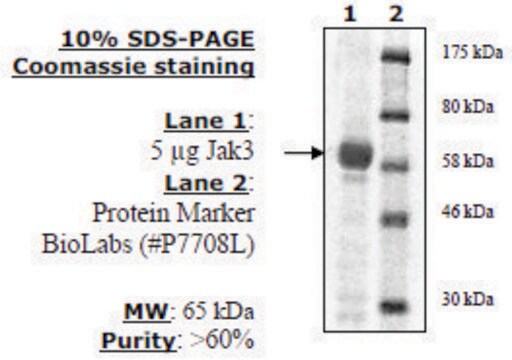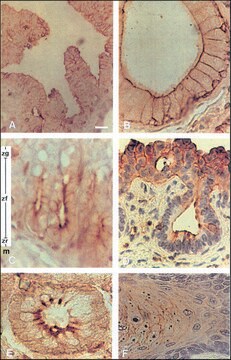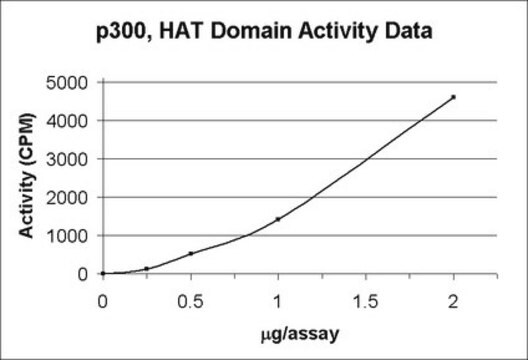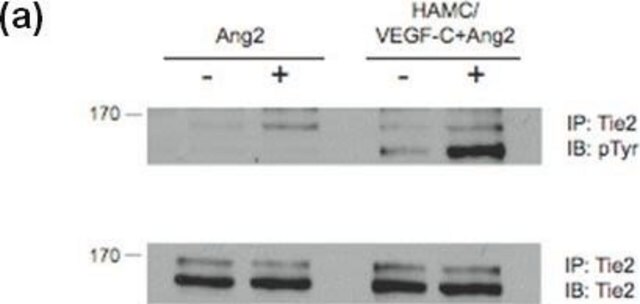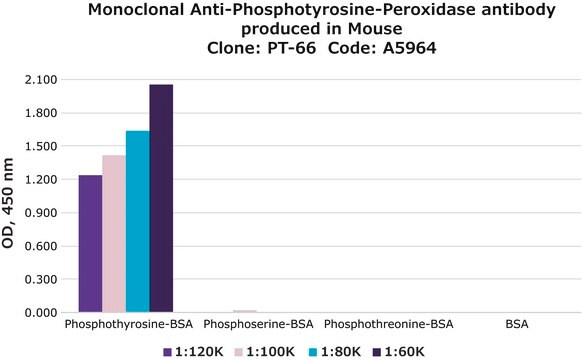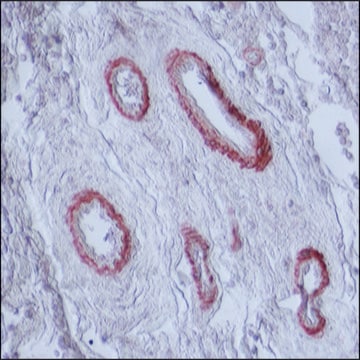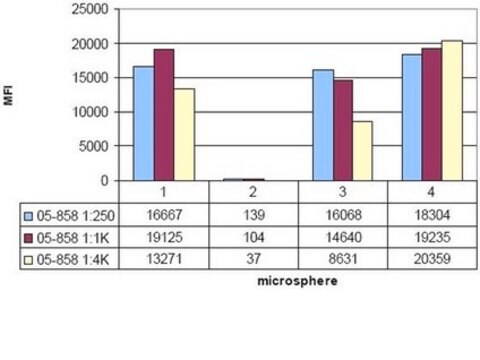推薦產品
一般說明
经 ELISA 和竞争性 ELISA 确定,该抗体与磷酸化的酪氨酸特异性反应,该磷酸化的酪氨酸既可以是游离氨基酸形式,也可与 BSA 或 KLH 等载体结合的形式。与非磷酸化的酪氨酸、磷酸苏氨酸、磷酸丝氨酸、AMP 或 ATP 没有观察到交叉反应。
Monoclonal Anti-Phosphotyrosine (mouse IgG1 isotype) is derived from the hybridoma produced by the fusion of mouse myeloma cells and splenocytes from an immunized mouse.
Reversible phosphorylation of proteins is an important post-translational modification that plays a regulatory role in the expression of most proteins in the cells. Reversible phosphorylation at multiple serine, tyrosine and threonine residues mediates numerous signalling pathways in both prokaryotic and eukaryotic cells . Cellular proteins with phosphorylated tyrosine increase many fold by the activation of tyrosine kinases. Most mitogenic receptor systems such as EGF, PDGF, insulin receptors contain serine/threonine/tyrosine kinase domains that undergo autophosphorylation when receptors bind to the respective ligands. Monoclonal anti-phosphotyrosine?biotin antibody can be used in dot blot (diluted 1:32,000). Mouse anti-phosphotyrosine?biotin antibody reacts specifically with phosphorylated tyrosine both as the free amino acid or when conjugated to BSA or KLH. This product does not react with non-phosphorylated tyrosine or other phosphorylated amino acids, including serine and threonine, or with phosphorylated molecules like AMP or ATP.
免疫原
与 BSA 结合的磷酸酪氨酸
應用
Monoclonal Anti-Phosphotyrosine?Biotin antibody produced in mouse has been used in western blot analysis to detect tyrosine phosphorylated proteins. It has also been used in BIAcore analysis. This conjugate maybe used as an analytical tool by enabling the identification and quantification of tyrosine phosphorylated proteins.
外觀
Solution in 0.01 M phosphate buffered saline, pH 7.4, containing 1% bovine serum albumin and 15 mM sodium azide.
免責聲明
Unless otherwise stated in our catalog or other company documentation accompanying the product(s), our products are intended for research use only and are not to be used for any other purpose, which includes but is not limited to, unauthorized commercial uses, in vitro diagnostic uses, ex vivo or in vivo therapeutic uses or any type of consumption or application to humans or animals.
未找到適合的產品?
試用我們的產品選擇工具.
儲存類別代碼
10 - Combustible liquids
水污染物質分類(WGK)
nwg
閃點(°F)
Not applicable
閃點(°C)
Not applicable
Essential roles for Dok2 and RasGAP in CD200 receptor-mediated regulation of human myeloid cells
Mihrshahi R, et al.
Journal of Immunology, 183(8), 4879-4886 (2009)
Qiao Yan et al.
The Journal of neuroscience : the official journal of the Society for Neuroscience, 23(20), 7504-7509 (2003-08-22)
Alzheimer's disease (AD) is characterized by a microglial-mediated inflammatory response elicited by extensive amyloid deposition in the brain. Nonsteroidal anti-inflammatory drug (NSAID) treatment reduces AD risk, slows disease progression, and reduces microglial activation; however, the basis of these effects is
Senarath Dissanayake et al.
Immunology, 107(4), 411-419 (2002-12-04)
T helper type 2 (Th2) -polarized immune responses are characteristically dominant in helminth infections. Two murine models that show a Th1 to Th2 polarization with infection progression are those of Schistosoma mansoni and Taenia crassiceps. In both, an early Th1
Induction of immunoglobulin G1, interleukin-6 and interleukin-10 by Taenia crassiceps metacestode carbohydrates
Dissanayake S, et al.
Immunology, 107(4), 411-419 (2002)
J M Revest et al.
The European journal of neuroscience, 11(4), 1134-1147 (1999-04-02)
F3, a mouse glycosyl-phosphatidylinositol anchored molecule of the immunoglobulin superfamily, is known to influence axonal growth and fasciculation via multiple interactions of its modular immunoglobulin-like domains. We prepared an Fc chimeric molecule (F3IgFc) to identify molecules interacting with these domains
我們的科學家團隊在所有研究領域都有豐富的經驗,包括生命科學、材料科學、化學合成、色譜、分析等.
聯絡技術服務
